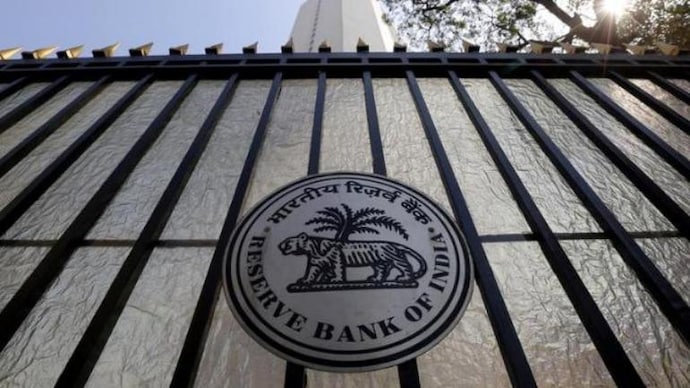How The Hindenburg Report Killed Many Birds With One Stone – Adani Group, SEBI, RBI, ED And The NDA Govt; Is It The Lethargy Of Regulatory Bodies Or Perhaps An Alliance Under The NDA Govt?
Adani Group, led by Gautam Adani, has never seen such expansion as it did in the last few years; the conglomerate rose to touch newer heights with each new company and became the pioneer of India's growth story. Its meteoric rise and expansion can be gauged from - having one publicly listed company in the 2000s to almost ten in 2023, including its latest spree of acquisitions - ACC, Ambuja Cements and NDTV. However, is it the company's hard work or NDA's favouritism that led to its stupendous rise?

Adani Group has managed to cast a wide net when it comes to diversity; it has a presence in various vital sectors, including infrastructure, power, airports, cement, media and FMCG.
While the UPA govt was in power between 2004-2014, the shares of Adani Enterprises, the only listed Adani Group firm in 2004, had a bull run; it then went on to list Adani Ports (Mundra port) and Adani Power and also began its expansion into other countries.
Until the NDA govt came into power in 2014, Adani group’s combined market capitalisation stood at around Rs 1.20 lakh crore.

NDA In 2014 – Present, Adani In 2014 – Present
While no doubt Adani Enterprises had begun to make its mark, it was only when the NDA government came into power that the meteoric rise of Adani Group started.
So much so that, as per current, the total market capitalisation of the ten listed Adani group of companies stands at approximately Rs 10 lakh crore. This includes Adani Transmission, Adani Total Gas, Adani Green Energy, Adani Enterprises, Adani Ports, Adani Power, Adani Wilmar, ACC, Ambuja Cements and NDTV.
How The Hindenburg Report Killed Many Birds With One Stone – SEBI
SEBI is a statutory regulatory body that the Government of India established in 1992 to protect the interests of investors investing in securities and regulate the securities market; it also regulates how the stock market and mutual funds function.
Thus, it plays a principal role; hence, in its failure, the investors must face the consequences and repercussions.
However, SEBI has repeatedly faltered in its role, objective, functions and purpose, and the Hindenburg report has caught both the offender and the regulator.
And in the present, it is the Adani Group, Gautam Adani, the man at the helm along with his close confidants who are none other than his family members, that have rocked the markets and India’s image on the global platform because of one sensational report – Hidenberg’s explosive all tell-tale of the Adani family conglomerate!
What has SEBI done and is doing to play its role efficiently? Has it managed to do what it is supposed to since it was formed in the first place?
Since the time of SEBI’s inception, it has failed miserably; the same can be attributed and said with conviction because of its past and present record!
The Hindenburg Report Exposes SEBI
The explosive report not only damaged Adani Group but also exposed the workings of SEBI; in fact, what it has bought to the fore is SEBI’s poor regulatory eye and delinquent investigations into any scams and frauds, both in the past and in the very present.
Let us see, did SEBI’s ‘regulatory eye’ fail to see the run-up of Gautam Adani’s Adani Group that, in the last few years, has managed to perform explicitly well in the Indian stock markets?
The market insiders knew that the Adani stocks (of all its companies) were overpriced, overvalued, and yet SEBI failed to see this. Is that even possible?

India’s Top Three State-Run Banks, Whose To Blame – RBI?
So for almost two-three years, the Adani Group kept borrowing from public sector banks; in fact, the country’s top three state-run banks have an aggregate exposure of close to ₹40,000 crores to various entities of the Adani group.
The largest lender, State Bank of India, has an exposure of ₹27,000 crores, while Bank of Baroda and Punjab National Bank have exposures of ₹5,380 crores and ₹7,000 crores, respectively.
Now comes the most astonishing part – while SBI and PNB have explicitly stated their exposure to the Adani group, Bank of Baroda declined to disclose the same but said that the group’s exposure was permitted by the Reserve Bank of India (RBI).
Isn’t that really scary? Here we have regulatory bodies that are turning a blind eye (almost) to favour a company that has the potential to deal a significant blow to the banking system, markets and the economy of the country.
Another Chip On The Block
What’s even more astounding is yet another fact – how did SEBI allow a blockbuster FPO of a company to the tune of a giant Rs. 20,000 crores, the largest in the market history, when the group is under the scanner, an ongoing investigation?
The Adani group pulled out the FPO a day after a ‘managed’ subscription, but who incurred the loss, and how could the Adani Group claim that there was no pending investigation against it?
Such a blatant lie, something that both SEBI and RBI did not think of clarifying. Here’s some food for thought: In July 2021, the government said in a written reply in parliament, “SEBI is investigating some Adani group companies about compliance with SEBI regulations.
Further, DRI (department of revenue intelligence) is investigating certain entities of the Adani group of companies under its laws.

Adani Group Favouritism By NDA govt?
The total market capitalisation of the 10-listed Adani group of companies stands at approximately Rs 10 lakh crore.
And it is ironic that even though the top management of Adani Group is a group of family members that have been allegedly involved and investigated for various frauds/scams, the same set of people are the top leaders under which this conglomerate operates.
The Adani group is the company that has been awarded various projects as and when the PM has visited any country; that in itself raises a red flag!
Conclusion: The Hindenburg report has revealed some key facts –
1) SEBI’s inefficiency, both in the past and present, in detecting scams and fraud.
SEBI’s ‘regulatory eye’ failed to see the run-up of Gautam Adani’s-Adani Group that, in the last few years, has managed to perform explicitly well in the Indian stock markets.
2)RBI’s callousness or favouritism under NDA govt example – Bank of Baroda declined to disclose the numbers but said that the Adani group’s exposure was permitted by the Reserve Bank of India (RBI).
3)ED – DRI (department of revenue intelligence) is investigating certain entities belonging to the Adani group of companies under its laws; what’s the outcome?
4)NDA govt – Why has the NDA govt allowed all the regulatory bodies to ‘go blind’ or ‘slowdown’ on investigations already under progress?
Hence, a classic case of nothing but questions and no forthcoming answers!
The Adani Group is yet another case of how India, its politics, politicians, regulatory bodies, and even the business world operates under the garb of ‘cleaning the system’, ‘new India’, ‘red tape’ and such when in reality nothing much has changed.




